Best Trading Apps Australia – Compare Top Trading Apps 2021
Please note that we are not authorised to provide any investment advice. The content on this page is for information purposes only.
Please note that we are not authorised to provide any investment advice. The content on this page is for information purposes only.
If you want to trade on the go, a trading app provides you with the flexibility you need. Fortunately, many brokers nowadays have stepped up their game, and their supported trading platforms can now be accessed from your favourite handheld device. In this guide, we explore the best options you have if you want to access the best trading app in Australia, how to sign up, and what you should consider before depositing your money.
Table of Contents
Back in the day, we had to be contacted by our broker via phone to place transactions. As technology advanced, we benefited from increased flexibility and opportunities. Trading apps are here to make our life easier, allowing us to place trades at any time and from anywhere, as long as we have an internet connection. We’ve done our due diligence and selected the following best trading apps in Australia:
If you want to find out what makes these so special, check out the following sections. We will review each of them, going over their strengths and weaknesses, so you can pick the best trading app for your needs.
Trading apps are designed to improve our comfort when trading, but they are not all the same. We’ve researched the best trading apps and presented both their pros and cons, so you can pick the right one for your budget, strategy, and needs.
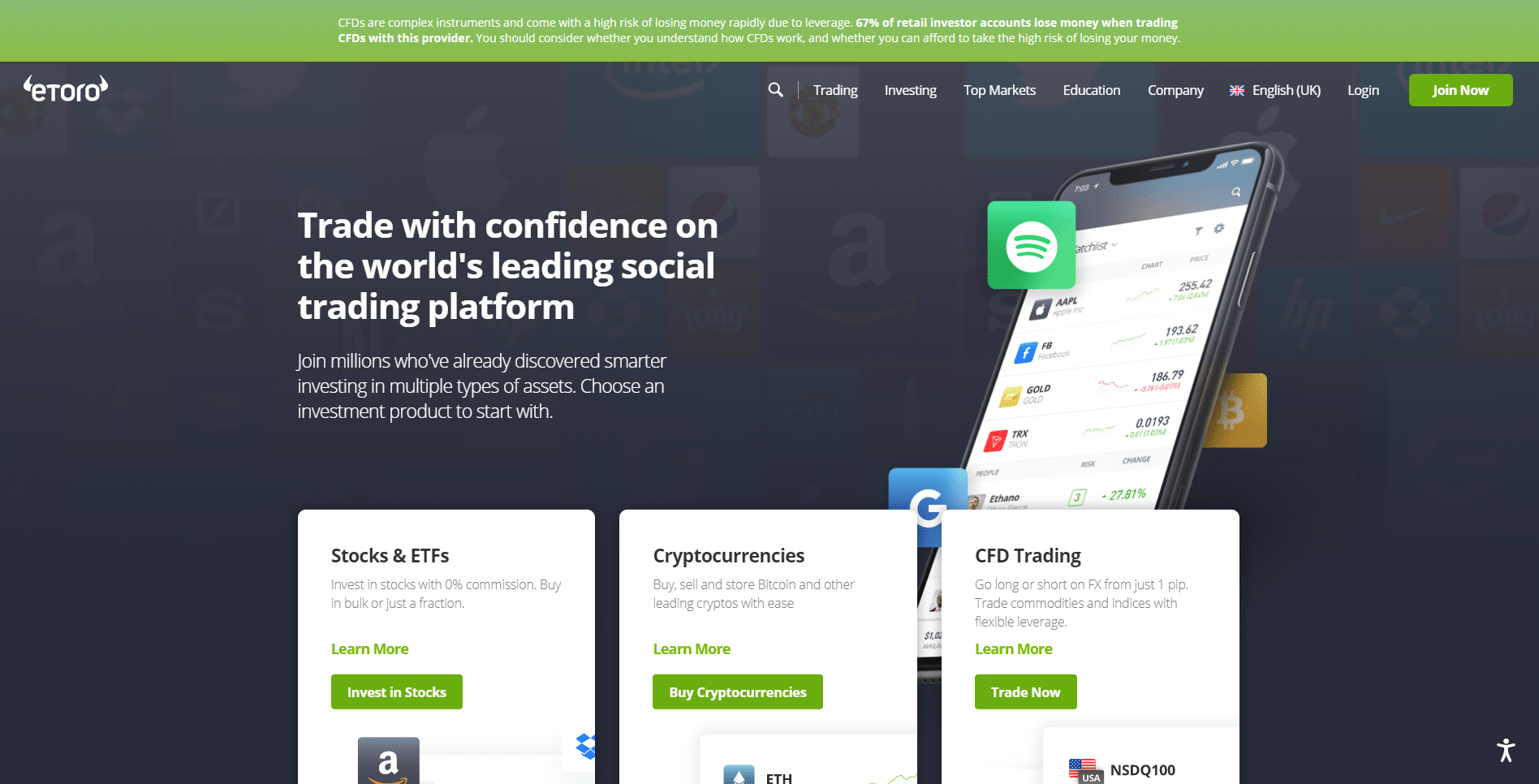
eToro has a robust reputation among online brokers. The company provides a proprietary web trading platform filled with ample features and tools, ideal for both beginners and veterans. The mobile version boasts a clean interface with an easy-to-use menu. You can quickly search for assets, manage your open positions, and check the news feed.
Similar to the web platform, eToro’s mobile version allows novice and experienced individuals to copy other successful traders. Apart from stocks, the app provides access to cryptocurrency, commodities, indices, and other types of assets. You can buy them either by opening long positions and owning the real assets, or via CFDs (contracts-for-difference), depending on your risk appetite, strategy, and experience.
For example, a beginner may want to buy real stocks, while an experienced trader could conduct technical analysis to identify more volatile and lucrative assets and speculate on short-term price movements via CFDs.
One of the best features is eToro’s highly competitive cost structure. Australian users only require US$50 to start trading, and the minimum transaction amount starts at US$25 for certain assets, such as cryptocurrencies. Without deposit or maintenance fees, a transparent fee structure, and plenty of features, eToro is a well-rounded option regardless of your trading experience.
Pros
Cons
67% of retail investor accounts lose money when trading CFDs with this provider.

If you want to dive into the intricacies of the trading world, derivatives can be highly profitable. AvaOptions is the mobile app developed by AvaTrade and allows you to trade options and forex. These assets are more volatile than others, such as stocks, so make sure you familiarise yourself with the concepts of risk-return tradeoff, risk management, and hedging, among others.
For example, the trading app has numerous charts that show you your overall (or net) risk, net vega, and others. AvaOptions is ideal for more experienced traders confident in their trading strategies – and you can choose from many of them, including call strategies, butterfly spread, and others.
On the other hand, if you don’t plan to be an active trader, there are better choices. AvaTrade is known for its steep inactivity fees that start after only three inactive months at US$50 and reach US$100 after 12 months.
Pros
Cons
67% of retail investor accounts lose money when trading CFDs with this provider.
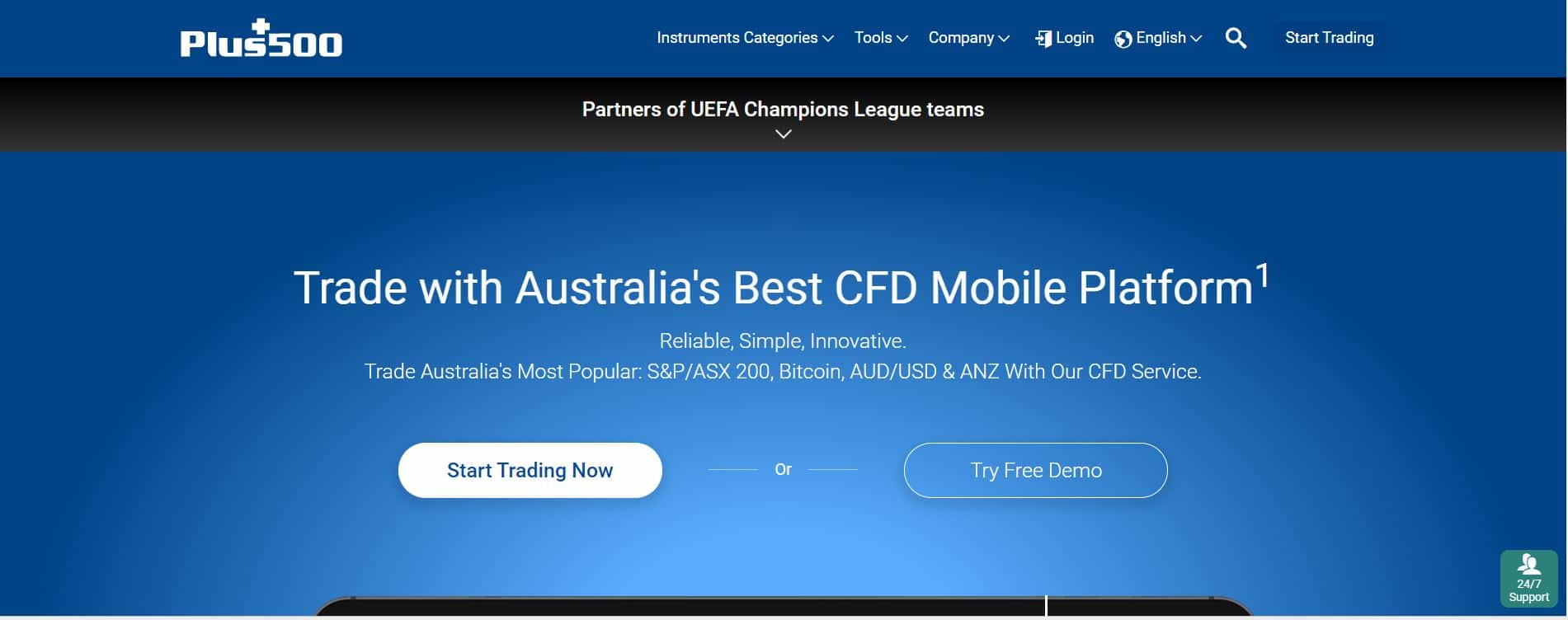
Plus500 is a reliable broker licensed by the Australian Securities and Investment Commission, just like the other two brokers above. This implies robust security measures, such as segregated client money, SSL security, and others. Even more, Plus500’s trading app is one of the highest-rated trading apps on both Google Play and Apple Store.
Some of the main features you’ll benefit from after registration include negative balance protection and free push notifications or emails regarding market events that may impact your portfolio’s performance. Also, you can set up price movement alerts, use different types of trading orders, and explore numerous markets.
Plus500 does not provide any real assets, so you should become familiar with risk management tools. Trading CFDs is associated with higher risk, but the broker provides access to numerous videos that explain the basics of trading and commonly used terms. Also, you can open a free demo account, so you can become familiar with the financial markets before risking your money.
Pros
Cons
67% of retail investor accounts lose money when trading CFDs with this provider.
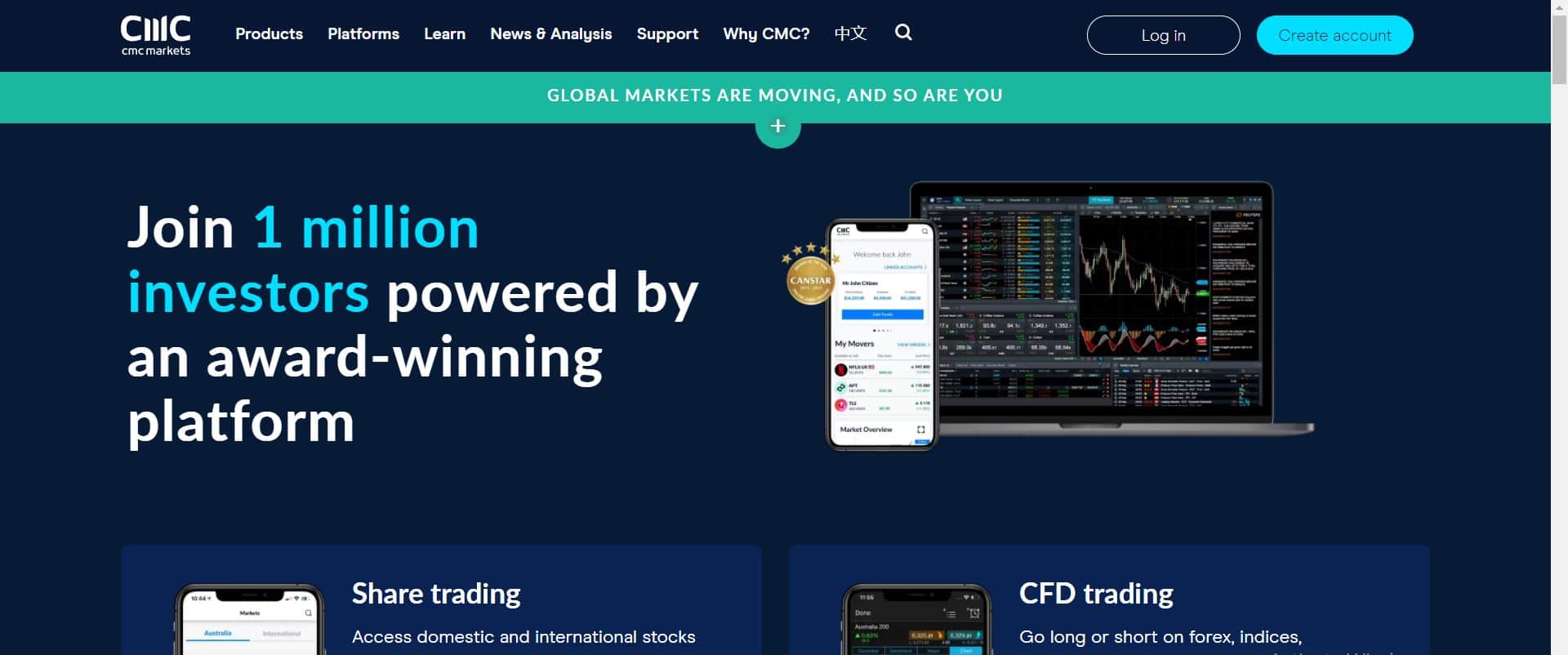
With more than 10,000 tradable assets, CMC Markets has nearly everything Aussies can look for in terms of trading assets. There is a $0 brokerage fee when trading international shares, including those listed in the US, the UK, or even Japan and Canada. Although best known for its many forex pairs, CMC Markets also provides access to commodities, cryptocurrencies, and indices, although some of them are available only via CFDs.
However, the cost is higher than other brokers, such as eToro. For instance, a classic account comes with a fee of $11 or 0.10% per trade, while active traders need to pay a slightly lower fee or $9.90 or 0.10%, which can quickly add up if you plan to actively manage your portfolio.
CMC Markets provides two different mobile phone apps, one designed for CFD trading and the other one for share trading. It has more order types than the average platform, and there are plenty of resources for you to access, ranging from market analysis to news.
Pros
Cons
67% of retail investor accounts lose money when trading CFDs with this provider.

IG’s award-winning mobile app is a leader in the industry. It has robust risk management tools, such as guaranteed stops that avoid the risk of slippage. However, these incur a small fee if they are triggered.
One of the main highlights of the trading app is the access to customisable, full-screen charts that will help you analyse assets with ease. You can trade wherever you are with real-time prices while accessing a broad array of technical indicators.
If you opt for a bank transfer, the minimum deposit is $0. However, if you use e-wallets like PayPal or a debit/credit card, you need to deposit at least $300.
Pros
Cons
67% of retail investor accounts lose money when trading CFDs with this provider.
Our recommended brokers hold all the necessary regulatory licenses, provide access to numerous assets, and have plenty of tools and features for any trading strategy. So, how can you differentiate among them? In the next sections, we will consider the most important aspects you need to keep in mind when finding the best trading app in Australia.
It is crucial to verify whether your chosen mobile trading app is provided by a trusted broker. In other words, you should only download your trading app from safe sources, such as the official Google Play or Apple Store, and make sure that the company behind the app holds all the licenses and meets all the requirements to hold your assets, including your cash.
As in the case of IG, some trading apps may come with specific requirements if you use certain payment methods. If you plan to trade daily to generate regular income, you will most likely have to deposit or withdraw money periodically. Opting for a trading app that charges high fees based on the preferred payment method can easily decrease your earnings.
Brokers like eToro, however, do not charge you extra money based on the chosen payment method, but a small withdrawal fee of US$5 will be incurred for each withdrawal. In such cases, it’s best to time your transactions and plan your budget attentively, so these fees won’t erode your profit.
As discussed above, some trading apps are specially designed for CFD trading and they do not have any real assets. You need to verify whether the trading app provides access to the markets you are most interested in according to your strategy.
Apart from choosing a CFD or a real asset trading app, you may further want to check if there are enough stocks on the platform, and what other types of assets you have access to. For instance, eToro allows you to trade both CFDs and real assets, so it’s considered more versatile and more convenient than downloading two different apps or choosing a trading app with only one of them.
When it comes to trading (rather than long-term investing), leverage and short-selling are key concepts that you will come across quite often. Let’s see what they mean and how you can use them to multiply your profit.
Leverage
Leverage refers to borrowing funds from your broker to multiply the value of your transactions. For example, if you decide to start trading with $100, you can use a leverage ratio of 1:2 (or 2x) and open a trade worth $200. In this case, if your asset price increases by 20%, you will earn $40 instead of $20. Once you close your trade, the entire profit of $40 goes to your trading account, and the broker’s money is returned.
However, the opposite is also available: if the asset price decreases by 20%, you will incur a loss of $40 compared to $20 if the position was unleveraged. Leverage is usually employed by more experienced traders after carefully conducting technical analysis on their chosen assets, ensuring that the risk is worth the potential return. Stop-loss orders also come useful in this situation; for instance, in the situation above, you could set a stop-loss order in case the market goes against you, closing your position automatically.
Short-Selling
Short-selling means that you borrow shares from your broker and sell them at the market price. Short positions are beneficial during bear markets, or when the price keeps decreasing, as you can book your profits when you short-sell assets whose prices are in a decline.
Most traders nowadays use CFDs to short-sell assets; CFDs are agreements between you and the broker that speculate on the price movement of an underlying asset. For instance, if you expect a company’s share price to go up this week, you buy the CFD on the stock and sell it after the price increases. If you expect the price to decrease, you open a short position using a CFD and book the profits as the price decreases. CFDs do not come with ownership rights, unlike real stocks.
If you want to make profits during recessions when the stock market declines, you may benefit from a CFD trading app as you can easily short-sell any asset.
Fees are something you should be aware of when trading because your overall profit can easily go down if you need to cover too many trading costs. Some brokers charge you commissions on every trade, withdrawal, or other operations. Let’s see the main fees you should pay attention to before signing up on a trading app.
Payment Fees
As an active trader, frequent deposits or withdrawals are a high possibility if you plan to adjust or quickly grow your portfolio. Payment fees are costs associated with withdrawals and deposits, but you should also keep in mind conversion fees if the broker’s base currency is not AUD. Brokers like eToro allow you to deposit money for free, while withdrawals come with a small fixed fee of only $US5.
Commissions
As discussed above, commissions are fixed fees charged when you buy or sell assets. You should aim to sign up with a commission-free broker like eToro if you want to protect your capital, especially as a day trader or beginner.
For instance, if you have a budget of $100 and you buy shares for it in two transactions, an apparently small fee of $10 means that 10% of your capital was spent on commissions. This can be detrimental to people with small budgets, as they may not be able to generate such high returns to cover all of these fees.
Overnight Financing
If you are planning to use derivatives like CFDs, overnight financing is yet another cost you should consider. This depends on your chosen brokerage and it refers to a small fee charged on derivatives to remain open during the night.
For instance, eToro charges overnight financing of $0.01 per position during the weekend if you short-sell assets using CFDs. This fee increases both in value and frequency (incurred daily) if you opt for leveraged positions. Traders can altogether avoid this fee by opening and closing positions during the same trading day (known as day trading).
The best trading apps in Australia should provide access to research and analysis. The main benefit is that it saves you time on researching your chosen assets outside the trading app. Also, the excellent options we’ve reviewed above provide you with market news, traders’ insight into certain assets (like eToro’s social trading features), and many technical indicators and financial ratios that help you conduct your analysis.
Copy trading can be a lifesaver for beginners or people who want to automate trading for different reasons – including lack of experience or lack of time available to analyse the financial markets. eToro’s copy trading feature allows you to copy experienced traders’ portfolios. In other words, you allocate a certain amount of money and the platform will automatically replicate the trader’s transactions.
Finally, trading apps may have bugs, malfunction, or you simply need more information regarding some features or tools. This is why it’s important to ensure that you have access to 24/7 or 24/5 customer service, ideally via phone or a live chat. Other methods like email may be too time-consuming and even risky when dealing with volatile financial markets.
In this guide, we’ve introduced you to the five best trading apps in Australia and how to choose the right one for your needs. Next, we will show you how to open a trading account in only a few minutes, deposit your funds, and start your trading journey. To illustrate this process, we will use our top pick in this guide – eToro, a fully regulated broker that allows you to buy CFDs or real stocks, open leveraged or unleveraged positions, copy other experienced traders, and build a profitable portfolio.
Firstly, you need to access eToro and click to create a new account. You will then be required to choose a username and a password to use the mobile app.
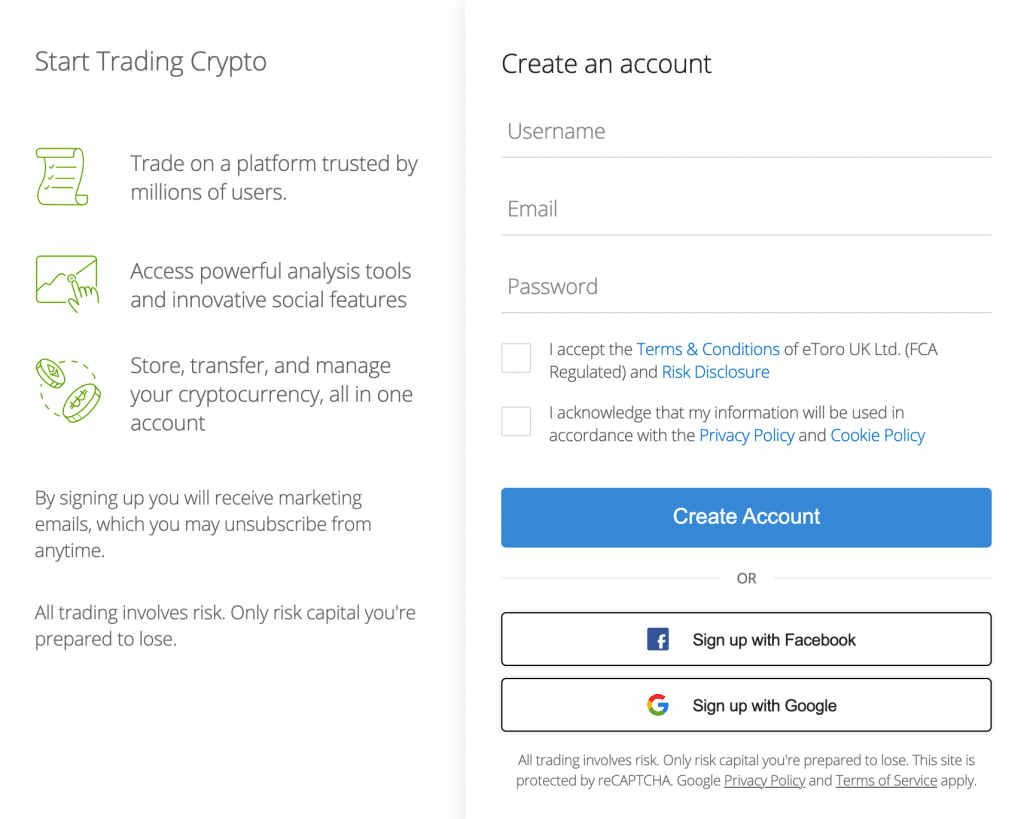
The Know-Your-Customer policy is enforced by regulated brokers which are required to verify your identity before granting you access to the financial markets. To complete the process, you need to upload your ID and proof of address. The broker will then check your documents and approve your account.
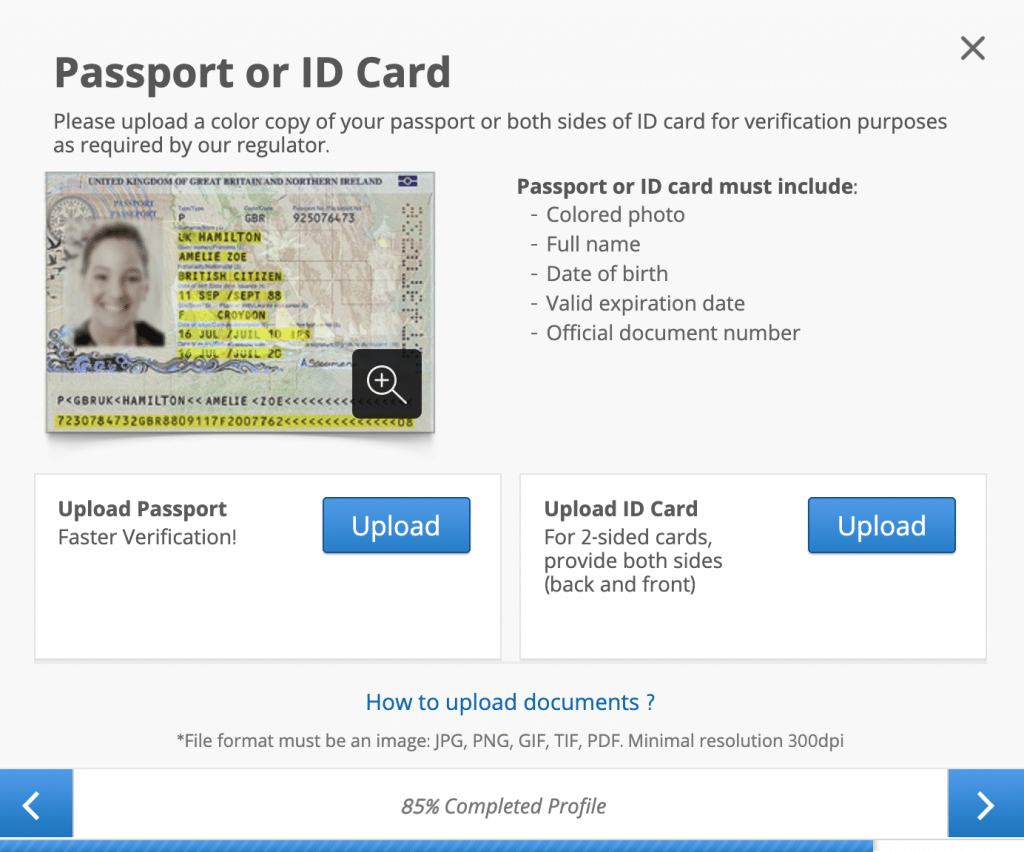
Once your trading account is live, you can start by having a look at the trading app, checking all of its features, and maybe even trying out the demo trading account. Once you are familiar with the trading app, deposit your funds into the account. If you choose e-wallets or a credit/debit card, the transfer will be completed immediately.
Depending on your strategy and objectives, you can look for specific stocks you’ve already selected, or simply browse the trading app to find lucrative opportunities. For instance, eToro has a special section that showcases the main market movers of the day – stocks that have tremendous growth or decline.
Once you know what you want to invest in, tap on “trade” and fill in your order details, such as amount, type of order (if applicable), and other details. Most assets also allow you to use leverage, choose either CFD or real asset, and more. To place the order, click the “open trade” button.
Overall, we have introduced you to the best trading apps in Australia, what their features and advantages are, what you can trade on them, and how to sign up on such platforms. If you are still unsure which one is the right choice for your needs, you may want to consider eToro – it is a well-rounded broker that meets the needs of all types of traders and investors, delivering great value at a highly competitive cost.
What is slippage and how does a boundary order help?
Why are overnight fees charged?
Is it better to trade CFDs or real assets?
Do trading apps show live pricing?
Are mobile trading apps ideal for experienced traders?